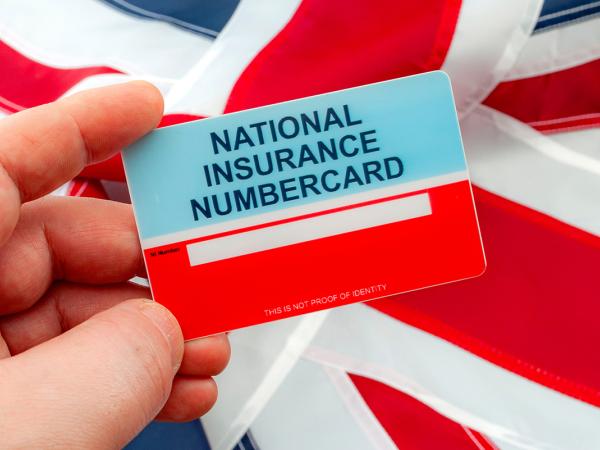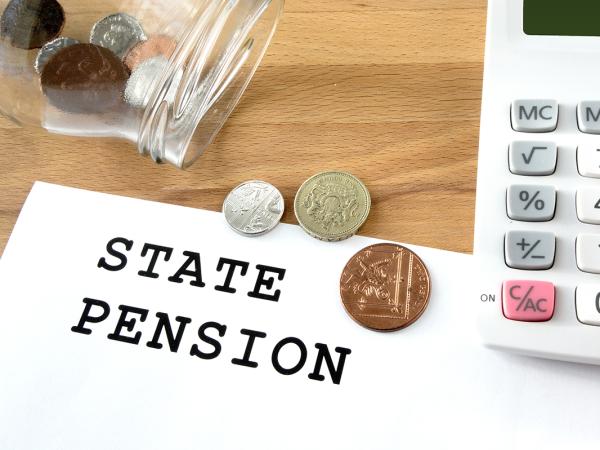Update: HMRC voluntary Class 2 NICs error: check your 2022/23 record
Please note: this news article was originally published on 8 July 2024 and was updated on 26 July 2024 following confirmation from HMRC that they will write to affected taxpayers.
HMRC have admitted that a processing error occurred with voluntary class 2 National Insurance contributions (NICs) for the 2022/23 tax year. These payments are usually made by some self-employed people with low profits.
If you opted to pay voluntary class 2 NICs on your tax return last year, it is important that you check that the payment was properly allocated to your National Insurance record. If not, you might lose out on a qualifying year for NIC purposes. Here we explain the problem and help you understand what you need to do if you think you might be affected.

Important update to the information in this article
This article was first published on 8 July 2024. You can read more below about the issue and who might be affected.
LITRG have continued to raise concerns about this issue. Originally HMRC had said they were unable to identify those affected by the error but they have now confirmed to us that they will be doing more to help. HMRC will identify and write to affected taxpayers in due course to set out what action those taxpayers need to take. HMRC also added that they are putting measures in place to prevent similar problems happening in future.
If you paid voluntary class 2 NIC for the 2022/23 tax year, keep an eye out for any letter or online communication from HMRC in case you are affected, and follow their instructions to put it right. In the meantime, you can still follow the instructions in this article to satisfy yourself that your contributions have been dealt with correctly.
What is the issue?
As a result of an HMRC computer error, people who paid voluntary class 2 NIC for the 2022/23 tax year via their self assessment tax return on or before the 31 January 2024 deadline might find that the contributions are not reflected on their National Insurance record.
If you paid voluntary class 2 NIC for the 2022/23 year, it is important you check if you are affected.
Who might be affected?
We understand from HMRC that the problem only affects those who paid voluntary class 2 NICs via their self assessment tax return for 2022/23. To be eligible to pay class 2 NICs in this way, you must have been self-employed in the relevant period.
As these are voluntary contributions, those affected would have made an active decision to make the payments.
This might be you if all of the following apply:
- You submitted a self assessment tax return for the 2022/23 tax year (for which the normal filing deadline was 31 January 2024).
- In that return you declared taxable self-employed profits of less than £6,725.
- You were not otherwise receiving National Insurance credits for the year.
- You wanted to ensure you got a ‘qualifying year’ for the state pension or other contributory benefits purposes.
You might remember making that decision to pay voluntary class 2 contributions, but if not, then you can look back your tax return to check. If you filed your return online using HMRC’s software, a copy should be stored in your Personal Tax Account.
If you filed your tax return on paper, you will only be able to check the tax return if you kept a copy of it. If you did not keep a copy but think you might have opted to pay voluntary class 2 NICs, you should still check your position with HMRC, as set out below.
How do I know if my voluntary contributions have been rejected?
HMRC say that those affected should have received a ‘customer service message’ saying that the contributions were paid late. This message will have been sent to you either:
- on your online Personal Tax Account, or
- in a letter.
Some people will have had the NICs automatically refunded to their bank account, but others might have the amount credited to their self assessment account. Any amount credited to your self assessment account may then have been set against an outstanding self assessment balance or debt on your account.
If you believe you paid your voluntary class 2 NICs on or before the 31 January 2024, and remember seeing a message from HMRC suggesting the payment was late then this suggests you have been affected by the computer error.
Even if you don’t remember seeing a customer service message, but you did pay voluntary class 2 NIC for 2022/23, you should still check your record. The steps below explain what you should do.
Steps to check and fix the problem
- If you use HMRC’s online services or the HMRC app to manage your tax affairs, log in and check your National Insurance record.
- Look to see if the year ‘2022 to 2023’ says ‘Year is not full’.
- If the year is showing as not full, call HMRC’s National Insurance helpline for assistance, and explain that you think your voluntary class 2 contributions were paid on time but might not have been allocated correctly.
- If you are unable to log in digitally to check your account, you can call the National Insurance helpline as above and explain that you need to check if you have a full year for 2022/23.
- If it turns out that the payment was not allocated to your National Insurance record as it should have been, we understand you will need to make a separate payment using a special payment reference that HMRC will supply.
Details of HMRC’s National Insurance helpline can be found on GOV.UK.
How much voluntary NIC would I have paid?
This depends on whether you were self-employed for the whole of the year, or only part of the year.
The maximum amount paid in voluntary contributions would be 52 weeks at the 2022/23 weekly rate of £3.15 – this is £163.80 for the whole of the tax year. The examples below illustrate this in more detail.
In the above examples, assuming both Barney and Yasmina paid their voluntary class 2 NICs on or before 31 January 2024, they should now check with HMRC that their National Insurance contribution record correctly reflects these payments.
What will happen if I do nothing?
If you do nothing, then the amount paid as voluntary class 2 NIC might not have been credited to your National Insurance record, which could mean you will lose out on a qualifying year for National Insurance purposes. This could affect:
- Your ability to claim full state pension in retirement.
- Your ability to claim certain contributory state benefits.
If your voluntary contributions were rejected, you might have already received a refund from HMRC, in which case the money is back with you. If HMRC rejected the contributions but you have not received a refund, we understand the amount should have been credited to your self assessment account, and potentially set against other self assessment liabilities.
In either case, to protect your National Insurance record for 2022/23, you will need to call HMRC’s National Insurance helpline to arrange for the payment to be made and correctly allocated.
Why has this problem arisen?
We believe the problem is due to the fact that HMRC’s self assessment systems are separate to their NIC systems. Class 2 NICs are usually paid under self assessment: you pay the contributions as part of your overall tax liability when you complete your tax return. When that total payment is received by HMRC under self assessment, the amount related to the voluntary class 2 NIC is then transferred across, and the payment is allocated to your National Insurance record.
As we understand it, this year the self assessment systems sent the class 2 NI data across to the NIC system a couple of days late. This caused the NIC computers to automatically register the class 2 NICs as being paid late. In turn, this meant they were rejected and refunded or held as an overpayment on the self assessment account, even though the class 2 NIC was paid on time.
If your contributions were actually paid late (so, if you paid your self assessment tax bill after the payment deadline of 31 January 2024), then the ‘rejection’ would be correct.



